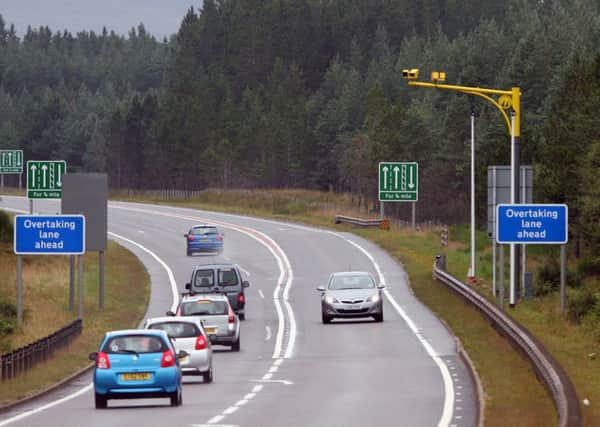A9 speed cameras cut injuries by ‘more than half’


Four people died on the A9 in the six months after the cameras were installed in October 2014 but police say excessive speed or overtaking does not appear to have been a factor in these deaths.
The number of deaths was similar to previous years, with nine people killed in 2011, eight in 2012 and seven in 2013, amounting to an average of four deaths every six months before the cameras were installed.
Advertisement
Hide AdAdvertisement
Hide AdHowever, just three people were seriously injured after the cameras were installed, compared with a previous average of ten, and 22 were slightly injured, down from an average of about 45.
There has also been a significant reduction in the number of vehicles exceeding the maximum speed limits, according to analysis compiled by Transport Scotland’s A9 Safety Group.
A spokeswoman said: “When compared to the average for the same period between 2011-2013, the number of fatal and serious casualties between Dunblane and Inverness is down by 50 per cent.
“There have also been substantial reductions in the number of injury accidents and also the number of casualties overall.
“Whilst these figures are encouraging, we will continue to monitor the route over the coming months and years to build upon these early results. We continue to be concerned about the number of fatal accidents on the A9 and we are working to further improve the safety of the route, as we do across Scotland.”
The £3 million system comprises 100 cameras on 80 miles of single carriageway sections between Inverness and Dunblane.
Superintendent Fraser Candlish, of Police Scotland’s road policing division, said: “Police Scotland welcomes the 50 percent reduction in serious injuries in the area covered by the A9 cameras since they were installed.
“Sadly, during the past six months there were three fatal crashes which resulted in four people losing their lives. As these incidents are still being investigated, I am not able to comment on the circumstances other than saying initial findings reveal that excessive speed or overtaking was not a contributory factor.
Advertisement
Hide AdAdvertisement
Hide Ad“While speed camera activation on the A9 has risen during the past six months, the figures show the vast majority of drivers are complying with the speed limits.
“Speeding is not the sole reason for crashes and Police Scotland is committed to deploying high-profile road policing officers on the A9 to influence driver behaviour positively and keep people safe.
“I continue to urge road users on the A9, and other roads, to concentrate on safe driving and avoid risky behaviour.”
The cameras were switched on in October last year as part of efforts to cut accident rate on the road.
A total of 298 drivers breached the average-speed threshold between October and January. During the following three months, the number reached 1,466.
The Scottish Government’s ongoing plan to dual the A9 is the biggest ever transport project undertaken in Scotland and will cost £3 billion.
Earlier this year transport minister Keith Brown revealed that a further 18 miles of the A9 will be ready for conversion to dual carriageway in 2017 but the overall completion date for the dualling project remains 2025.
A seven-mile section between Pitagowan near House of Bruar and Glengarry, the five-mile Dalwhinnie-Crubenmore stretch, and the six-mile Tomatin-Moy section will be ready for dualling in 2017, said Mr Brown.